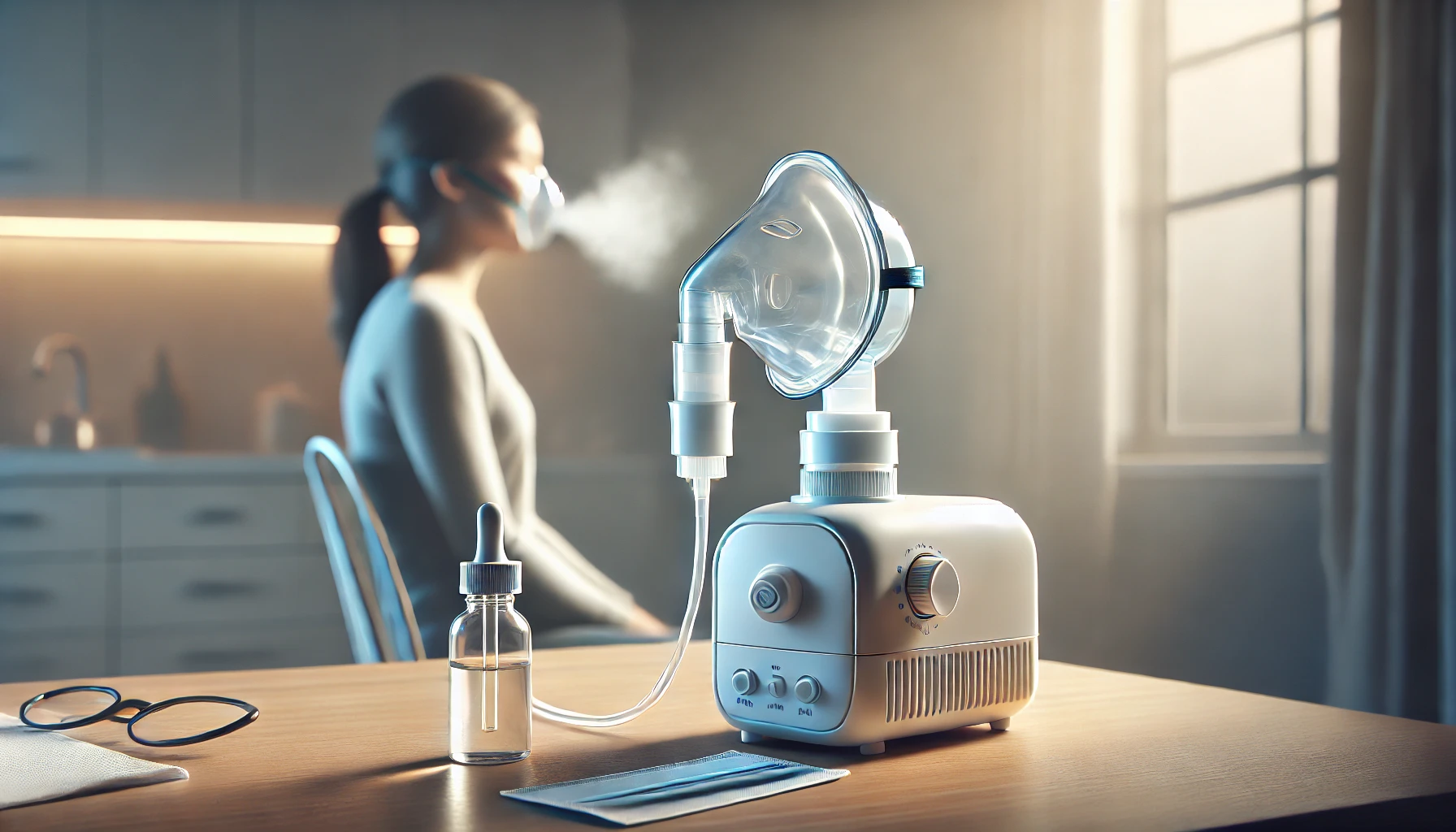This post was written with Consensus AI Academic Search Engine – please read our Disclaimer at the end of this article. Nebulizers are medical devices used to administer medication in the form of a mist inhaled into the lungs. They are commonly used for patients with respiratory conditions such as asthma, chronic obstructive pulmonary disease (COPD), and other respiratory infections. This article will explore the definition, types, uses, and cleaning procedures for nebulizers.
Definition
A nebulizer is a device that converts liquid medication into a fine mist, which can be inhaled directly into the lungs. This method of delivery is particularly useful for patients who have difficulty using inhalers, such as young children, the elderly, or those with severe respiratory conditions. Nebulizers are often used to deliver bronchodilators, corticosteroids, and other medications that help open the airways and reduce inflammation.
Types of Nebulizers
There are several types of nebulizers, each with its own mechanism for converting liquid medication into an aerosol:
Jet Nebulizers
Jet nebulizers use compressed air to create a high-velocity stream that turns liquid medication into a fine mist. These are the most common type of nebulizers and are often used in both home and clinical settings. Jet nebulizers are effective but can be noisy and require a power source1 2.
Ultrasonic Nebulizers
Ultrasonic nebulizers use high-frequency sound waves to produce a mist. They are quieter than jet nebulizers and can deliver medication more quickly. However, they are generally more expensive and may not be suitable for all types of medication1.
Mesh Nebulizers
Mesh nebulizers use a vibrating mesh to produce a fine mist. They are portable, quiet, and efficient, making them ideal for travel and use outside the home. Mesh nebulizers are also more expensive and require regular maintenance to ensure the mesh does not become clogged1.
Uses of Nebulizers
Nebulizers are used to treat a variety of respiratory conditions by delivering medication directly to the lungs. Some common uses include:
Asthma
Nebulizers are often used for asthma patients who cannot effectively use inhalers. They can deliver bronchodilators and corticosteroids to help open the airways and reduce inflammation. Studies have shown that nebulized corticosteroids like beclometasone dipropionate and fluticasone propionate are effective in controlling asthma symptoms1.
Chronic Obstructive Pulmonary Disease (COPD)
Patients with COPD can benefit from nebulizers to deliver medications that help reduce symptoms and improve lung function. Nebulizers can be used to administer bronchodilators, corticosteroids, and other medications that help manage COPD1.
Acute Wheezing in Children
Nebulizers are particularly useful for young children with acute wheezing, as they may have difficulty using inhalers. Studies have shown that nebulized salbutamol is effective in treating wheezing in young children, although it may increase heart rate compared to metered dose inhalers with spacers2.
Cleaning and Maintenance
Proper cleaning and maintenance of nebulizers are crucial to ensure effective medication delivery and prevent infections. Here are some general steps for cleaning a nebulizer:
- Disassemble the Nebulizer: After each use, disassemble the nebulizer parts, including the mouthpiece, mask, medication cup, and tubing.
- Rinse with Warm Water: Rinse all parts (except the tubing) with warm water to remove any medication residue.
- Wash with Mild Soap: Wash the parts with mild soap and warm water. Avoid using harsh detergents or chemicals.
- Rinse Thoroughly: Rinse all parts thoroughly with warm water to remove any soap residue.
- Air Dry: Allow the parts to air dry on a clean, dry towel. Do not use a cloth to dry the parts, as this can introduce bacteria.
- Disinfect Weekly: Once a week, disinfect the nebulizer parts by soaking them in a solution of one part white vinegar to three parts water for 30 minutes. Rinse thoroughly and allow to air dry.
- Replace Parts as Needed: Regularly check the nebulizer parts for wear and tear and replace them as needed. Follow the manufacturer’s recommendations for replacing parts such as the mask, tubing, and medication cup.
Conclusion
Nebulizers are essential devices for delivering medication to patients with respiratory conditions. Understanding the different types of nebulizers, their uses, and proper cleaning procedures can help ensure effective treatment and prevent complications. Whether used for asthma, COPD, or acute wheezing in children, nebulizers play a vital role in respiratory care.
Disclaimer
The content presented in this blog is generated by Consensus, an AI-powered academic search engine, and is based on publicly available scientific literature. While every effort is made to provide accurate, up-to-date, and well-researched information, the content is intended for informational and educational purposes only. It does not constitute medical advice, diagnosis, or treatment. Always consult a qualified healthcare professional before making any decisions regarding medical conditions, treatments, or medications. The AI system’s analysis may not cover all perspectives, emerging research, or individual cases, and it is not a substitute for professional expertise. Neither the blog publisher nor the developers of the AI-powered search engine are responsible for any actions taken based on the information provided in this content. Use of this information is at your own risk. Citations to the original scientific studies are included for reference, but these studies should be reviewed in full and interpreted with the guidance of a healthcare or research professional.
If you are experiencing a medical emergency, please seek immediate attention from a healthcare provider.
